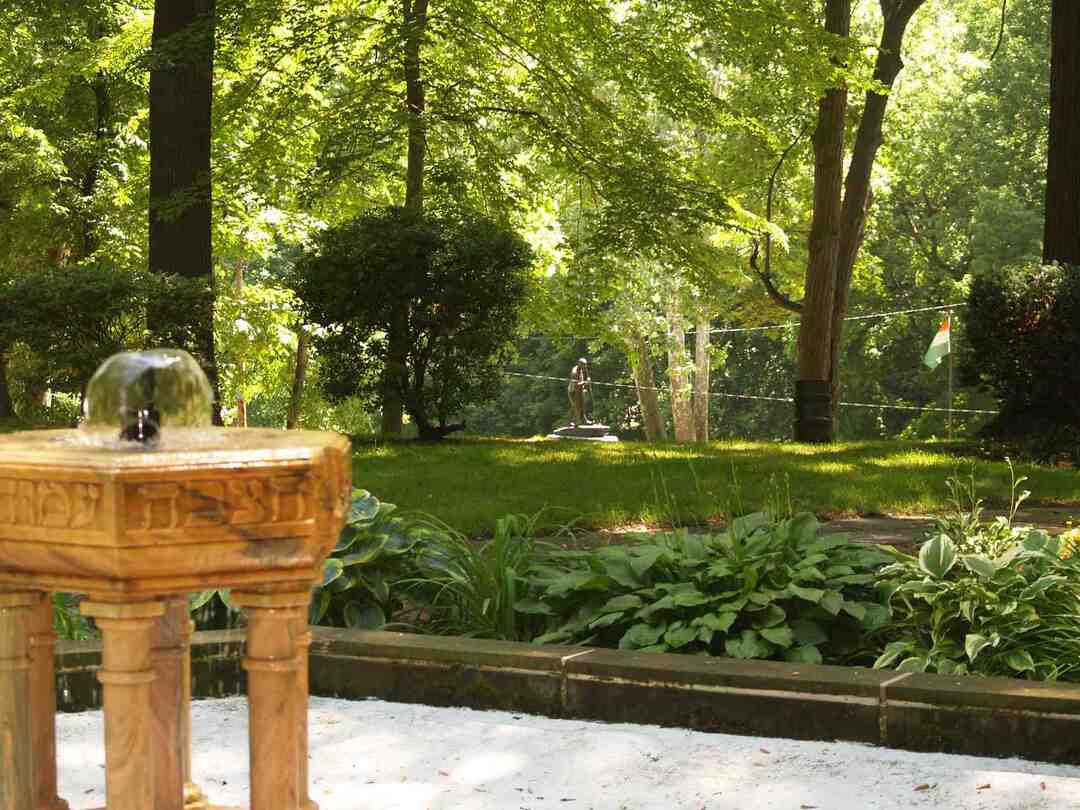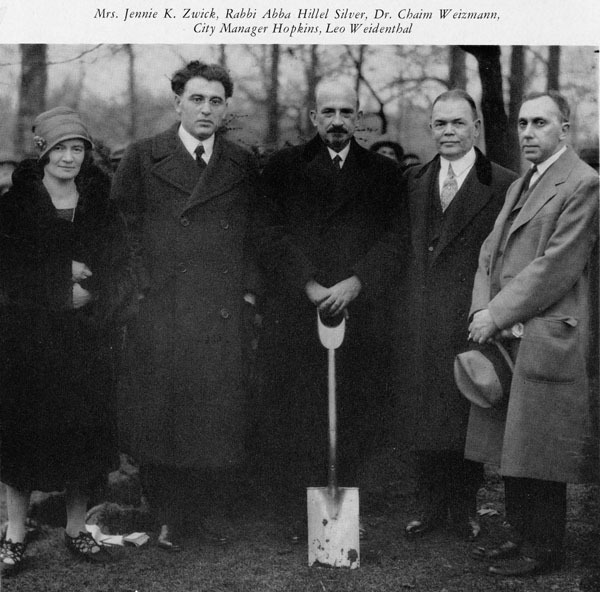Hebrew Cultural Garden

The Hebrew Garden was designed by T. Ashburton Tripp. It was the first garden to be built after the Shakespeare Garden and signaled the formal beginning of the Cultural Gardens. Dedicated in 1926, it is a monument to the Zionist movement, as well as the vision of Leo Weidenthal. Originally naming it "Poet's Corner", Weidenthal was instrumental in the founding of the Cultural Gardens chain. The Jewish Federation of Cleveland sponsors the Hebrew Cultural Garden through its Hebrew Cultural Garden committee.
The pink Georgia Eweh marble fountain is the centerpiece of the Hebrew Cultural Garden. The bowl sits on seven pillars referred to in the Hebrew holy texts. In the King James translation of Proverbs chapter 9, verse 1 that text states the following: "Wisdom hath built herself a house; She hath hewn her out of seven pillars". A popular explanation or commentary on the text suggests that the first sentence refers to that God created the world, with the second sentence referring to the seven days of creation.
Directly south of the fountain is the Musicians' Garden, which is in the shape of a lyre or small harp, framed by a sidewalk. The September 10th, 1937 article Wisdom's House Dwells in Hebrew Cultural Garden states that "the triangular pillar at the south end bore a plaque on its north face honoring Jacques Halevy, author of the opera 'The Jewess', Giacomo Meyerbeer, composer of the opera 'L'Africana', and Karl Goldmark, author of 'Queen of Sheba'."
The central architectural feature of the Garden is a hexagonal Star of David, which gives shape to the landscape. In an October 11, 1942 story in The Plain-Dealer, Mary Hirshfeld described the garden in the following way: "From the pool stone paths radiate and form the Shield of David. At four of the six points which form the double triangle of the Star of David are memorials to the Hebrew philosophers; Moses Maimonides, Baruch Spinoza, Moses Mendelssohn, and Ahad Ha'am".
A round bronze plaque is attached to an elevated boulder in the northern section of the garden. The plaque bears Emma Lazarus' poem for the Statue of Liberty: "Give me your tired, your poor, your huddled masses yearning to breathe free..." Underwritten by Federation of Jewish Women's Organizations and dedicated on June 14, 1949, the plaque is located adjacent to a boulder with Lazarus likeness on it.
The first Jews to make their home in Cleveland were from Unsleben, Bavaria. In 1840 there were 20 families alongside 20 single males living in the city. Jews settled in Cleveland during two "eras": The German Era (1837-1900) and The East European Era (1870-1942). By 1880 there were 3,500 Jews living in Cleveland. This number increased dramatically over the next generation.By 1925, about 85,000 Jews lived in the city. Initially, Jewish settlements were established near the Central Market east of the Cuyahoga River. As the community grew, they moved farther and farther east, first to Glenville and the Mt. Pleasant/Kinsman districts. Following World War II the Jewish community moved into Cleveland Heights and other eastern suburbs. At the turn of the twentieth century only a small number of Jews remained on the west side. In 1910 they formed a congregation which later became known as the West Side Jewish Center.
On the east side, the area between Coventry Rd. and South Green Rd in Cleveland Heights became the heart of the Jewish community. In the late 1950s and early 1960s the focal point was Taylor Rd., which witnessed the greatest concentration of Jewish institutions in Cleveland's history. Later decades have seen many Jews moving even further east, most recently to Beachwood and Pepper Pike.
Audio
Images




